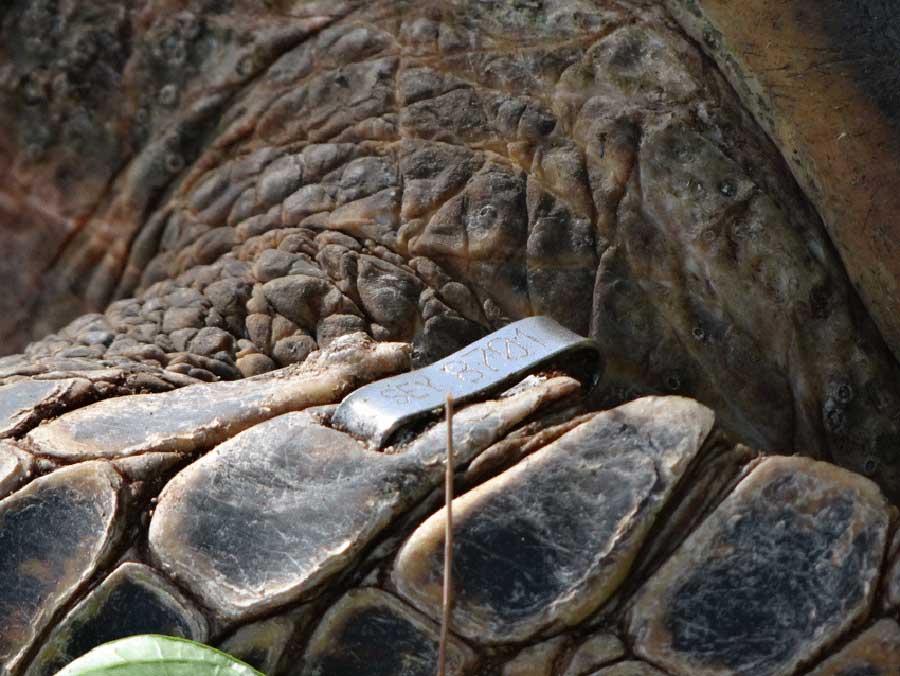
When turtle nesting season is at its peak on Cousin Island Special Reserve, patrolling the beaches for emerging turtles is an important task of our work day. Nature Seychelles staff and volunteers go out every hour, usually in pairs, to check the beaches for emerging or nesting turtles. If a turtle comes up the beach, you can see the track she leaves behind and locate her.
Nature Seychelles carries out a monitoring program for the turtles first started by BirdLife International in 1972 making this the longest running monitoring program for Hawksbill turtles in the world. What a privilege for me to take part in this!
In Seychelles the Hawksbill Turtle (Eretmochelys imbricata) mostly comes up during the day. This behaviour is unique, as turtles usually nest at night when it is cooler. To see such a special marine animal walking on land during the day is truly a remarkable experience.

After finding the right spot for her nest, usually in the vegetation zone next to the beach, she starts to dig the egg chamber. She digs precisely with her back flippers a 40-50 cm deep hole where she will lay then gently cover and camouflage the nest.
A nesting turtle can get easily disturbed by people around her when she comes to the beach to nest. Any disturbance may cause her to go back to the water without laying her eggs. However, once she starts to lay her eggs she gets into a trance like state. This is the perfect time to gather as much data from her as possible. Based on her tags, a database of her nesting history shows us the origin of her first tagging and the nesting beaches of her choice.
Once she starts laying, one of us lies on the ground right behind her and place a hand underneath her to count the eggs. She lays in clutches of 1-5 eggs and more than 100 eggs in a nest. As soon as she reaches about 100 eggs we start measuring her and reading the tags on her front flippers. If she is not tagged, we make sure she is tagged before she returns to the water.

Her nest well camouflaged, she returns back into the ocean. Temperature will now determine the sex of the hatchlings. After an incubation time of about two months, hatchlings have to make their own way into the big blue. Only a few will survive and swim far outside, starting their long journey with the gulfstream and feeding from organisms on the surface.
After about five years, most of them return to the place of their birth, where they start feeding from sponges in the reefs close to shore. There you can see them while snorkelling. Currently Nature Seychelles is also undertaking some other turtle research activities including taking pictures of their unique patterned cheeks to create a database about the turtles, their behaviour and the location of the sighting to gain knowledge about the population around Cousin and if they are staying around the coral reefs.

We use an identification software which allows us to compare and indentify individuals without using tags. The 400 meters of water around the island is a Marine Protected and has a large variety of fish, coral and sharks. It is also good feeding grounds for turtles.
My time as a volunteer with Nature Seychelles was a valuable, more so the conservation efforts to ensure the protection of this critically endangered species. My experience on this unique island makes me want to gain more knowledge about marine conservation and educate others about the importance of taking care of our natural resources.
Sabrina Glufke

